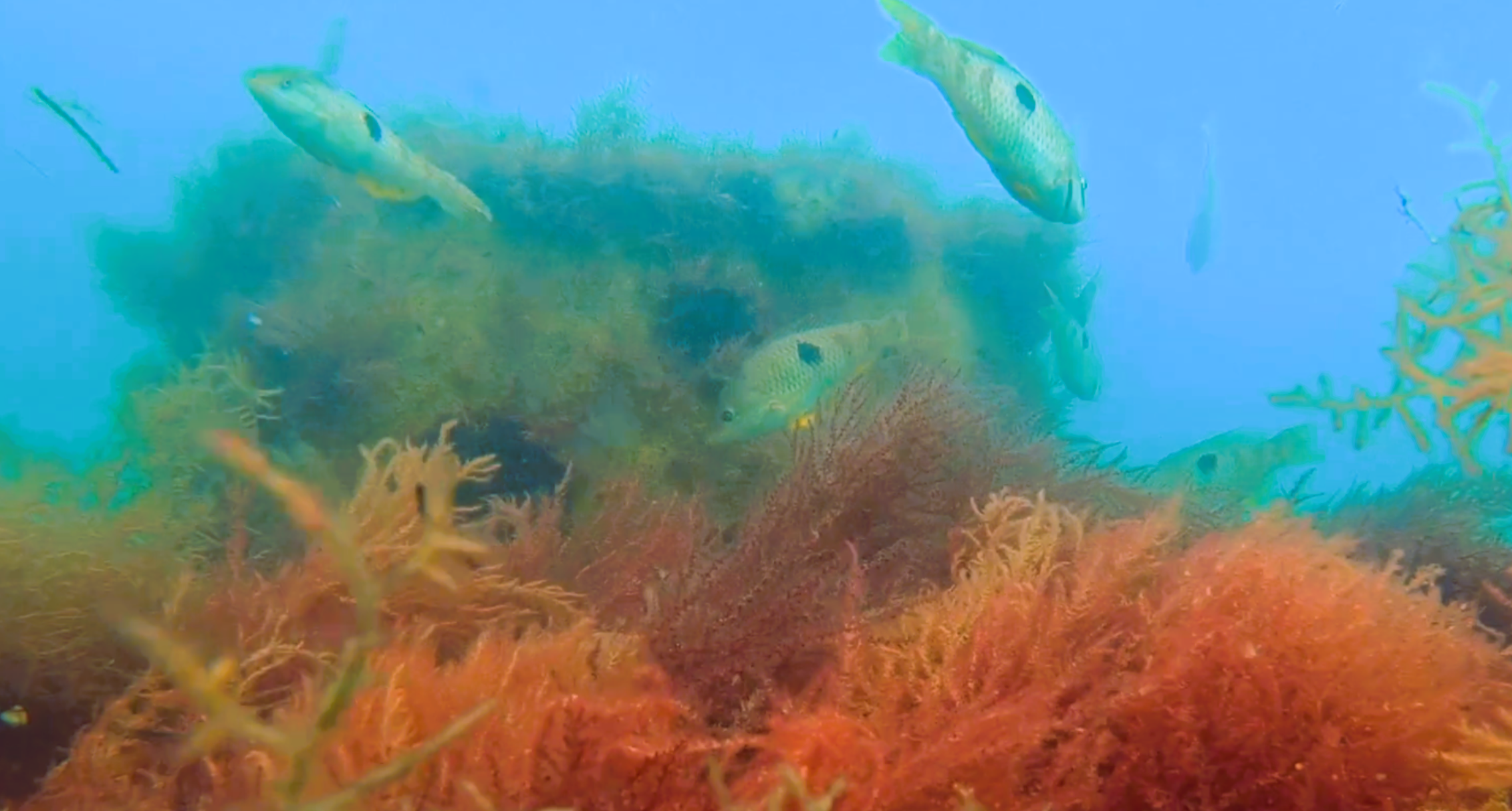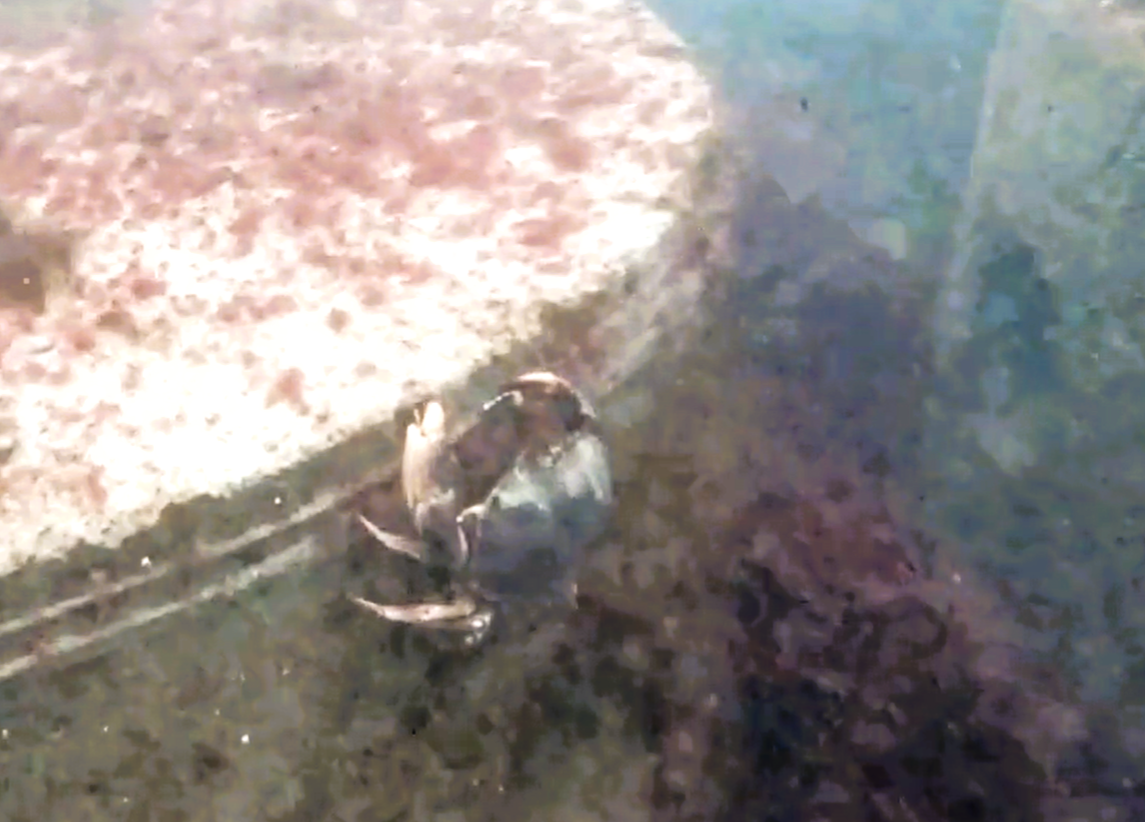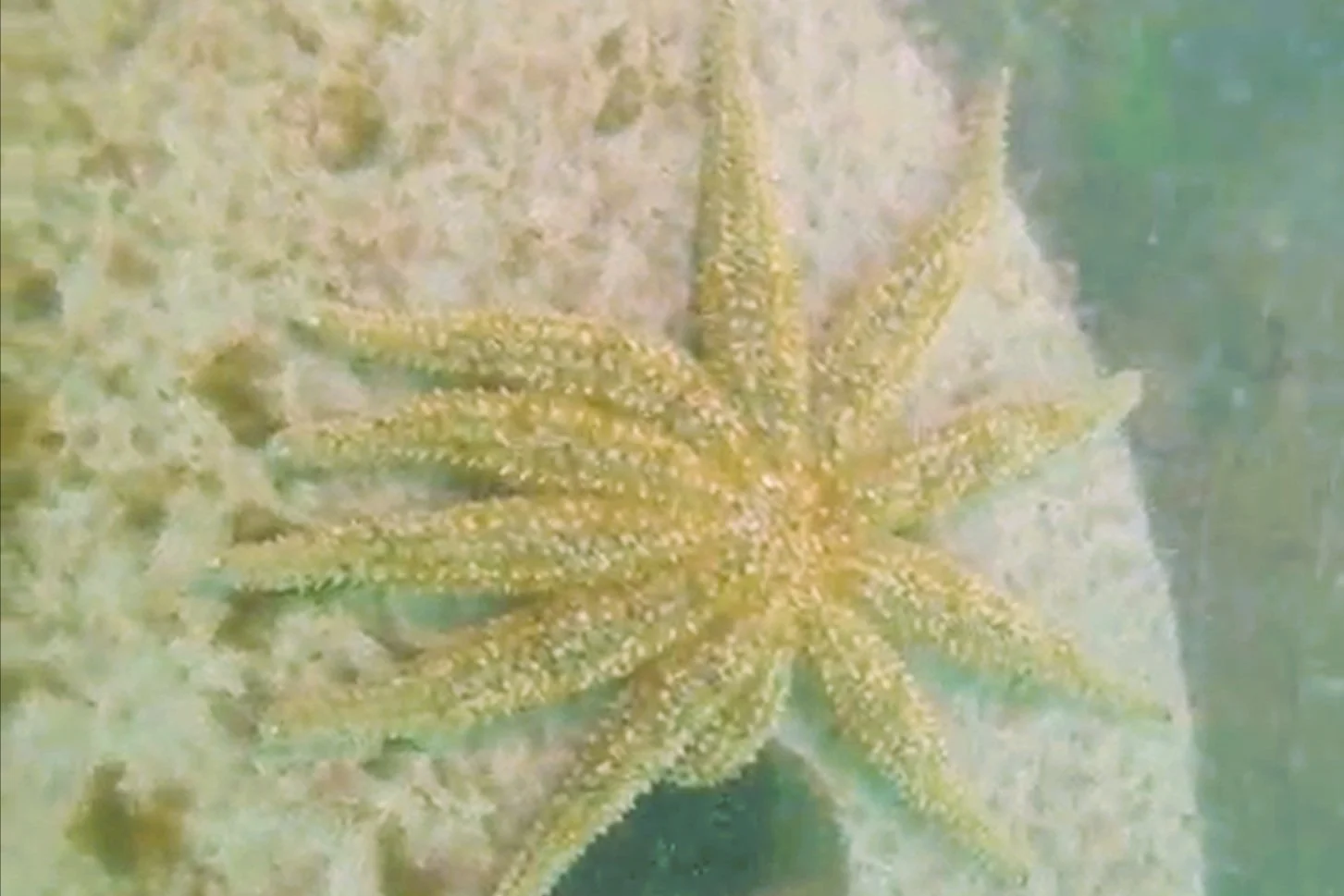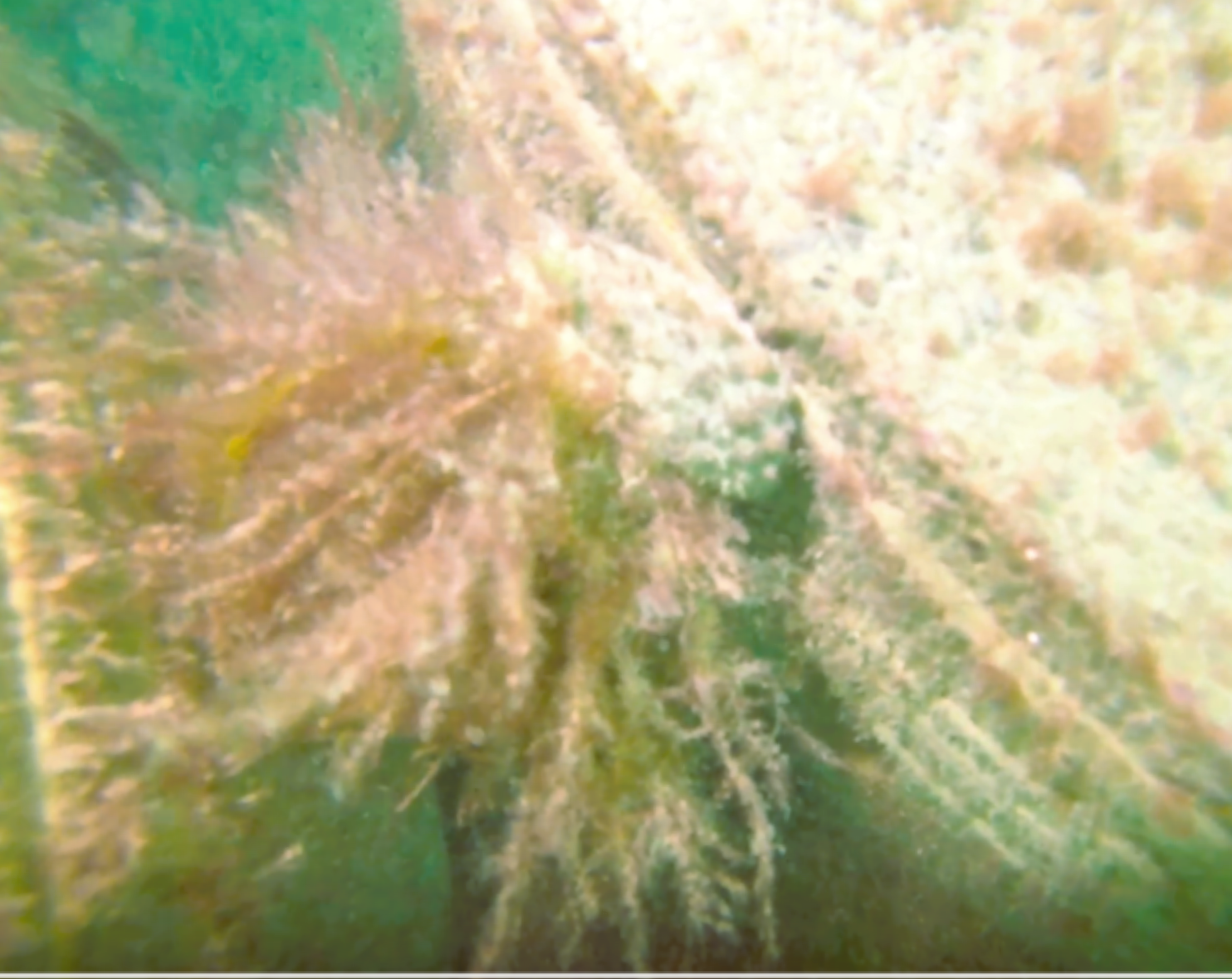
We’re watching closely. See the marine life that has made our Sea Nests home.
Sea Nest is excited to welcome…
-
Spotties.
Spotties, also known as paketi (Notolabrus celidotus) are quite possibly the most underrated endemic fish species in Aotearoa. Yet spotties play an important role in our marine ecosystem and the boom in spotty numbers at the Sea Nest reef will play a crucial role in attracting larger, predatory species!
-
![]()
Blue cod.
This impressive New Zealand blue cod (Parapercis colias), also known by its Māori names, rāwaru, pākirikiri and patutuki, was seen on the Sea Nest reef four weeks after module deployment. The blue cod was likely drawn to the reef by the Sea Nest habitat, which mimics natural bedrock outcrops, along with the increase in species like spotties and small crabs – which are important food sources for this highly sought after fish.
-
![]()
Māori Octopus.
Seven weeks post deployment we were excited to see that a beautiful Māori octopus (Macroctopus maorum) had made themselves at home in a Sea Nest. This is the next step in marine species succession. As the grazers, herbivores and scavengers increase in numbers, predators will move in and make the most of both the refuge and prey abundance the Sea Nest reef supports.
-
![]()
Nudibranch.
Nudibranchs (sea slugs) are commonly found in harbours and estuaries in Aotearoa. They are carnivorous, feeding on species such as sponges, which have been quick to populate the Sea Nest reef. Sea slugs only have a short life-span, and lay eggs within gelatinous spirals – which were seen on the modules by week four. Sea slugs will play an important role in the Sea Nest ecosystem as predators and prey.
-
![]()
Sponges.
Another common yet underrated species, sponges have taken up residence in the Sea Nest reef. Sponges are ancient marine animals which play critical roles in the marine ecosystem. They provide habitat, shelter and food sources for other marine organisms and play an important role filtering water and processing carbon, nitrogen and phosphorus.
-
![]()
Camouflage crab.
Crabs are crustaceans which are found in harbours and estuaries around Aotearoa. The Sea Nest reef has become home to a range of crab species, including hermit crabs and this fabulous looking camouflage crab (Notomithrax sp). The camouflage crab has attached plants and other organisms to its back and legs in order to blend into its surroundings.
-
![]()
Cushion Star.
Patiriella regularis, or the New Zealand cushion star, is a sea star that is endemic to Aotearoa. It is one of the most common rocky shore sea stars in New Zealand, and feeds on algae, barnacles and invertebrates. In this image, we can see that the cushion star is happily gorging on algae growing on the Sea Nest! Sea Stars will help keep the numbers of other organisms under control, helping to ensure that the ecosystem is balanced.
-
Sea Tulips.
Sea tulip is the common name for a species of sessile ascidians or sea squirts, known by Māori as Kāeo. The common name of this species comes from their 'bulb' which is attached to a stalk and resembles a slightly misshapen, knobbly tulip flower. Yet sea tulips are filter feeding invertebrate animals, not plants. The flexible stalk extends the kāeo into high current areas where it filters plankton from the water.
-
Common Rock Crab.
Hemigrapsus sexdentatus, also called the common rock crab, is a marine crab that commonly inhabits the southern shores of Aotearoa. Rock crabs typically live in relatively sheltered, rocky, and muddy shores and are known to feed on drift algae and sea snails, both of which are relatively abundant on the Sea Nest reef. They also occupy the important scavenging niche in the marine foodweb and help clean up dead plant and animal matter. Female crabs are commonly found carrying eggs under their abdomen during the winter months.
-
![]()
Spiny Sea Star.
This intimidating looking sea star, Coscinasterias muricata, is commonly known as a Spiny Sea Star (Eleven Arm). These stars have a very rough spiny upper surface, eleven long arms and change colour as they grow. Small stars are green to blue-grey while bigger ones are beige to orange. Spiny Sea Stars have voracious appetites and will eat almost anything. This Sea Star was seen moving through each of the Sea Nests looking for prey. We are hoping some of our rewilded pāua stay out of its grasp!
-
Cook's Turban.
This Cookia sulcata or cook’s turban is a type of sea snail, a marine gastropod mollusc in the family Turbinidae (the turban snails). With more than 80,000 species known worldwide, molluscs are the second largest group in the animal kingdom. Sea snails are common in coastal rocky reef habitats around Aotearoa. They are vegetarian grazers, feeding off seaweed. This snail is very well camouflaged with substantial algal growth on its shell making it almost impossible to differentiate it from the Sea Nest substrate from a distance.
-
![]()
Black-footed pāua.
Reaching up to 15 centimetres in length, black-footed pāua Haliotis iris are New Zealand’s largest and most well-known herbivorous snails. They are also a taonga kai moana species. Pāua graze on seaweed using a long rasping tongue and the colour of their shell varies depending on the type of seaweed eaten. They predominantly feed at night on red and brown seaweeds and will lift the edge of their shell to trap large pieces as they drift by. Pāua are haemophiliacs, meaning their blood does not clot, therefore care should be taken to not prise off undersized pāua (<125 mm) when harvesting as they are unlikely to survive.
-
Black goby.
The NZ black goby Gobiopsis atrata is endemic to Aotearoa and is a relatively secretive fish. Often hiding in cracks and crevices with only a head poking out. They lay eggs on rocks or shells and will guard them protectively. The goby family has more species than any other fish family (both marine and freshwater), with over 2,000 documented species, but we only have one in NZ.
-
![]()
Conger eel.
The Southern conger eel, kōriro or Conger verreauxi is a native species and can be found living in rocky reef areas as deep as 100m. Congers are scaleless eels with large heads, wide mouths, and strong teeth and grow up to 1.8 metres. Yes, they can bite! What’s more, once they bite something they are physically unable to let go! Conger eels feed on crabs, small fish and are also scavengers. They have poor eyesight and hunt primarily by scent. Congers (along with many other marine species) rely on the habitat of kelp forests which support food, shelter and nurseries. This individual appeared to be 1 m in length and was a relatively young eel, based on its grey colour and pale belly.
Diversity & Species succession.
Our Sea Nest pilot reef has rapidly transformed a barren sandy seabed in Awarua Bluff Harbour into a thriving, diverse rocky reef ecosystem supporting a wide range of species from juvenile to adult.













